Nostalgia is having a moment. Walk down any main street and you might see a poster for a remake of a beloved film franchise. On the way to go shopping you might see a few cringey things that you wore when you were in high school featured in store. Low-rise jeans anyone? No, your eyes aren’t deceiving you, we’re living through a revival of the 90’s and 2000’s.
In this first COPY+PASTE post, we’ll be diving into 90’s and 2000’s nostalgia as it relates to media and design, why we look to the past for inspiration, and how you can turn your nostalgia into a creative outlet through Picsart.
A Little (Recent) History
You don’t have to reach too far back to realize that Millennials and Gen-Z have been through a lot. We’ve recently gone through a pandemic together, countless job losses, and see-sawing economies. If this sounds a little too familiar, you’re totally right. For many, this feels like a sloppy rehash of our childhood.
Fast forward to the COVID-19 pandemic, we battled cabin fever by rewatching our favorite Disney films, rediscovering music we used to love, and revisiting hobbies like playing PC games like The Sims, and coloring books. It’s a clear pattern that we turn to our childhood comforts in times of stress and anxiety.
We could argue that turning to nostalgia is simply a coping mechanism, but many creatives see a unique opportunity. Nostalgia becomes a powerful medium to generate cutting edge creative solutions, reinvigorate brands, and expand creative universes.
Millennials and Gen-Z make up the majority of the workforce today and are on track to have the largest amount of spending power in history. With these new generations raring to spend, film industry executives, creative directors, tech startups, fashion houses, game studios and more are paying attention to the rise of nostalgia and curating new media that creates that familiar feeling of comfort and joy in nostalgia and bringing a new twist to them.
Nostalgia In the Wild
In the design world, we’re seeing these creative directors catching inspiration from the turn of the millennium Y2K era: sleek computerized type, early internet user interfaces, chunky analog devices, nature references (especially that iconic Windows XP wallpaper), and unconventional collages.
[Credits In Order: Giuseppe Pettineo featured in It’s Nice That, Pinterest, Tiki Disco flyer by Jonna Mayer, Yelena Popova for Vogue Ukraine, Giuseppe Pettineo for WeTransfer, The Boring Phone by Heineken featured in HMD, Pinterest, Magdalena Bay through Turntable Lab ]
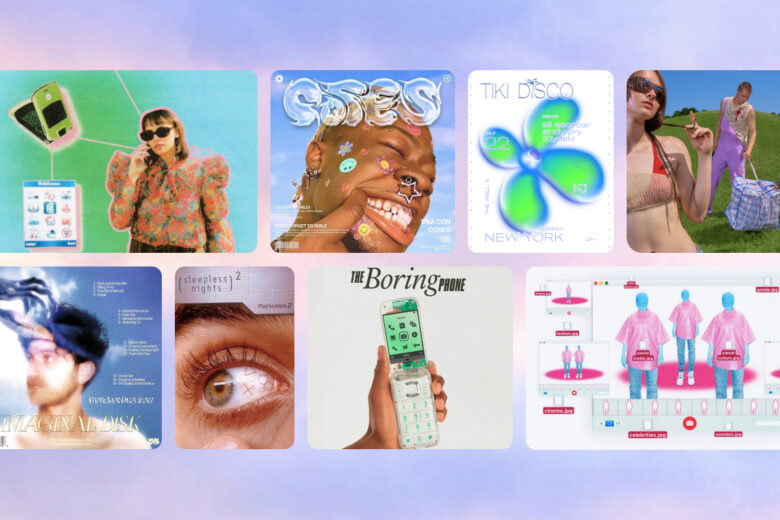
In photography, trending styles include film filters, bloom, fish eye lens, analog prop devices like walkmans and chunky headphones.
[Credits In Order: Angela Yuen for Madame Figaro Hong Kong Shot by Isaac Lam via Instagram, Low Lights Studios via Instagram, Angus Chiang Fall/Winter 2020, Youthforia brand featured in Creative Boom ]
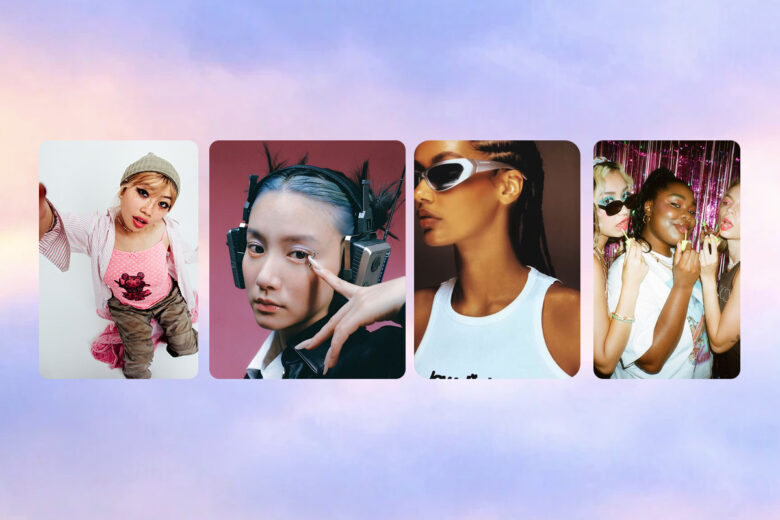
With the new millennium comes brand new perspectives on what the future holds—and contrasting typographic styles. We saw a rise in slick futuristic typefaces that suggest optimism and utopia. From another perspective, we’ve seen the explosion of hip-hop culture and the very real, revolutionary stories from Black creatives.
[Credits In Order: Garimpo Studios 22 via Instagram, ASAP Rocky Creative via SynnStudios vis Instagram, Cover Art By Paul White of Me Company featured in Y2KInstitute, Lisa Rockstar Singe Cover shot by Jack Bridgland designed by Jack Schofield]

In fashion, you’ll see influencers rocking razor thin glasses, low rise jeans, mini tops, sheer blouses, trucker hats, graphic polos, and colorful knit sweaters. All these styles have made a comeback in fast fashion and on the runway.
[Credits In Order: Christina Aguilera shot by Kevin Mazur for Getty, Bella Hadid Shot by Bella Hadid, Tyler Mcgillivery featured in Kendam.com, Nick Knight for Christian Dior 2001]
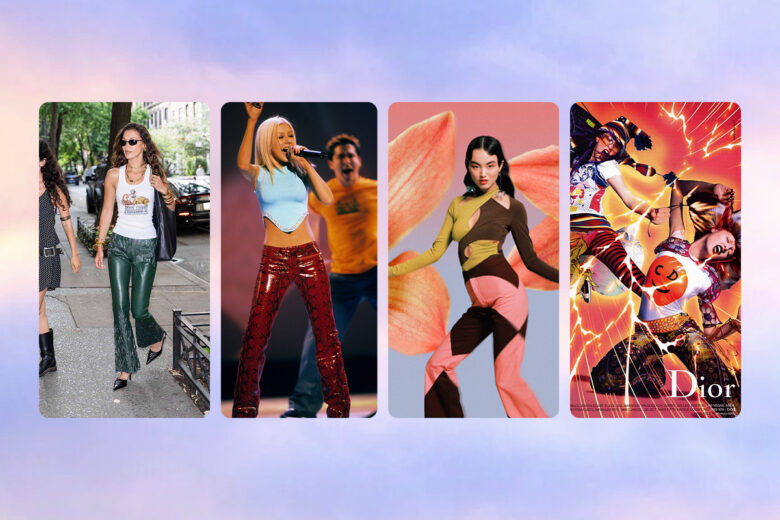
Legacy brands like The Gap, Juicy Couture, Champion, and Marni all have seen significant brand reinvigorations—a testament to their evolving strategic multimedia partnerships, and modernized creative direction.
[Credits In Order: Troye Sivan for The Gap, Gabriette for Juicy Couture 2023 featured in HypeBae, Saweetie for Champion featured in Essence.com, Elle Fanning for Coach featured in WWD]
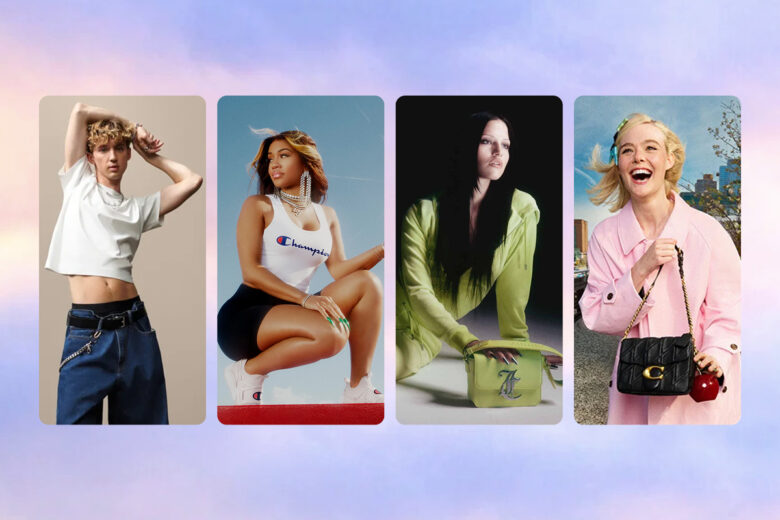
In film and television, we’re seeing a dizzying number of sequels, expansions, spin offs, and remakes of beloved franchises that brought us joy. Films like Lord of the Rings, Hocus Pocus, Star Wars, and Gladiator have seen significant expansion in the past few years. While some films and series have had success while others flopped, studios continue to seek existing beloved franchises and reinvent them for a modern audience.
Today’s rising pop girlies like Beabadoobea, Olivia Rodrigo, and Doechii are heavily inspired by the aesthetics and sounds of their predecessors like Blink-182, P!nk, No Doubt, and Missy Elliot—with their own twist. You’ll definitely see 30+ year olds and pre-teens screaming along to Good 4 U (guilty as charged).
[Beabadoobee for Face Magazine shot my Marili Andre, P!nk shot by Rob Verhorst/Redferns, No Doubt Shot by Joseph Cultice featured in Orange Country Register, Olivia Rodrigo via Instagram, Doechii album artwork shot by John Jay, Missy Elliot Under Construction Album cover shot by Jeff Reidel]
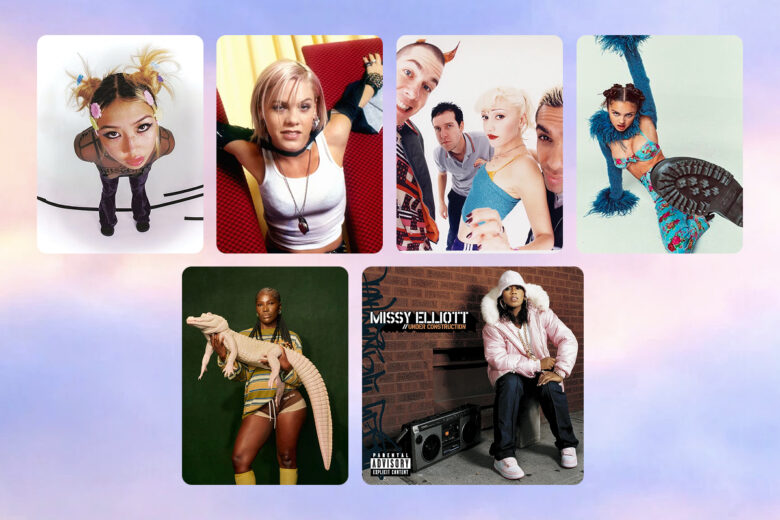
Nostalgia is a creative movement—a multisensory Renaissance that brings us joy and a sense of community in spite of the troubles that we experience today. In 15 years, we’ll have gone through another revolution in the trend cycle and nostalgia will have a completely different meaning but for now, we move forward embracing this era of new and old, one jelly-shoed step at a time.
Find Comfort And Creativity In Your Nostalgia
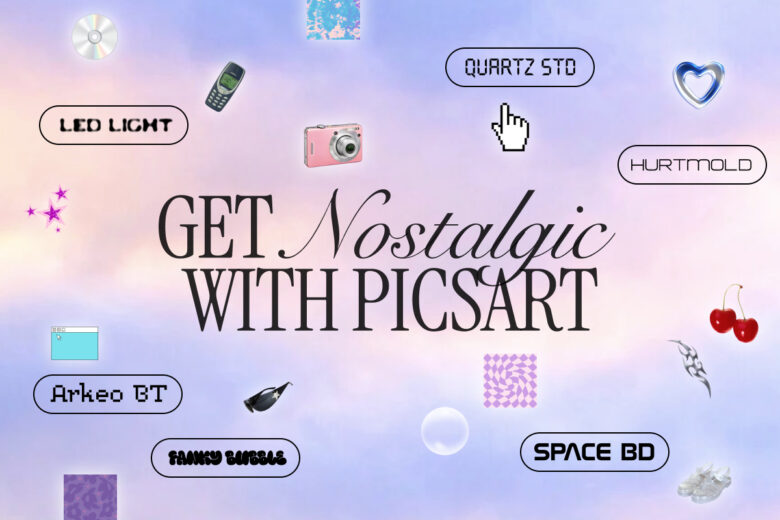
We’ve seen how creative industries can pour countless resources into recreating that feeling of nostalgia. It’s a powerful truth that can be harnessed for your creative pursuits. Whether you’re a content creator looking to get that Y2K vibe or just looking for a creative outlet, Picsart has a ton of filters, stickers, fonts, backgrounds and much more to capture that nostalgic feeling.
Empowering the Creator in Everyone
Picsart is the world’s largest digital creation platform. Its AI-powered tools give creators of all levels the ability to design, edit, draw and share photo and video content anywhere. It’s used by consumers, marketers and content creators for both personal and professional design, and is available to businesses via API partnerships and integrations. Picsart has collaborated with major artists and brands like Discord, PopSockets, Shopify, Taylor Swift and more. Download the app or visit picsart.com.




